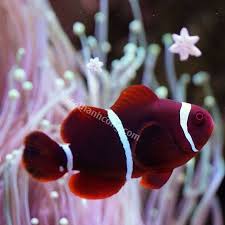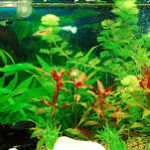Chinese tea culture is deeply rooted in tradition, and the art of brewing tea plays a crucial role in bringing out the best aroma, taste, and health benefits. While high-quality tea leaves are essential, proper brewing techniques can elevate the flavor, ensuring a perfect cup of tea every time.

This article explores:
✔️ The importance of correct tea brewing techniques
✔️ Common mistakes to avoid when brewing tea
✔️ Step-by-step brewing methods for different types of Chinese tea
✔️ Advanced techniques to maximize tea flavor
1. The Importance of Proper Tea Brewing Techniques
Chinese tea is more than just a drink; it’s a refined art that enhances the tea-drinking experience. Brewing tea correctly is essential for several reasons:
🌿 1.1. Unlocking the Full Flavor of the Tea Leaves
✔️ Each type of tea has unique flavor compounds that require specific brewing conditions.
✔️ Proper brewing ensures that the sweetness, bitterness, and aroma are well-balanced.
💡 Using the wrong technique can result in a tea that is too bitter, too weak, or lacking complexity!
🌿 1.2. Maximizing Health Benefits
✔️ The antioxidants, catechins, and amino acids in tea dissolve at different temperatures.
✔️ Brewing tea at the right temperature preserves its nutritional properties.
💡 For example, green tea has powerful antioxidants that can be destroyed if brewed with boiling water!
🌿 1.3. Maintaining the Tradition of Chinese Tea Culture
✔️ Tea brewing is an important part of Chinese culture and tea ceremonies.
✔️ Mastering proper techniques enhances respect for tradition and deepens the tea experience.
💡 A well-brewed tea is a reflection of patience, mindfulness, and artistry!
2. Common Mistakes to Avoid When Brewing Chinese Tea
Even with the best tea leaves, certain mistakes can negatively impact the flavor and aroma. Avoid these common errors to ensure a perfect cup of tea:
✔️ Using water that is too hot – Some teas become bitter if brewed at high temperatures.
✔️ Steeping tea for too long – Over-steeping releases excessive tannins, making the tea overly astringent.
✔️ Using too many tea leaves – Leads to an overpowering, unbalanced flavor.
✔️ Not preheating the teapot or cup – A cold teapot can alter the brewing temperature, affecting extraction.
✔️ Reusing tea leaves incorrectly – Some teas can be steeped multiple times, but each infusion needs a different approach.
💡 Understanding the right brewing techniques can eliminate these issues and bring out the best in every tea!
3. Step-by-Step Brewing Techniques for Different Chinese Teas
Each type of Chinese fresh tea requires a unique brewing method to bring out its best characteristics. Let’s explore the proper techniques for different teas:
🍵 3.1. Green Tea (绿茶, Lǜ Chá) – Light and Refreshing
✔️ Water Temperature: 75–85°C (167–185°F)
✔️ Steeping Time: 1–3 minutes
✔️ Tea-to-Water Ratio: 1 teaspoon per 150ml
💚 Brewing Method:
1️⃣ Heat water to 75–85°C (avoid boiling).
2️⃣ Pour a small amount of water over the tea leaves to rinse them.
3️⃣ Add fresh water and steep for 1–3 minutes.
4️⃣ Strain and enjoy the delicate flavors.
💡 Brewing at a lower temperature preserves the tea’s natural sweetness and prevents bitterness.
🍵 3.2. Oolong Tea (乌龙茶, Wūlóng Chá) – Floral and Aromatic
✔️ Water Temperature: 85–95°C (185–203°F)
✔️ Steeping Time: 3–5 minutes
✔️ Tea-to-Water Ratio: 1 teaspoon per 150ml
💙 Brewing Method:
1️⃣ Heat water to 85–95°C.
2️⃣ Rinse the leaves briefly to awaken their aroma.
3️⃣ Pour hot water and steep for 3–5 minutes.
4️⃣ Strain and enjoy its floral notes.
💡 Oolong tea can be steeped multiple times, with each infusion revealing new flavors!
🍵 3.3. White Tea (白茶, Bái Chá) – Delicate and Smooth
✔️ Water Temperature: 80–90°C (176–194°F)
✔️ Steeping Time: 3–7 minutes
✔️ Tea-to-Water Ratio: 1 teaspoon per 150ml
🤍 Brewing Method:
1️⃣ Use spring water or filtered water for a pure taste.
2️⃣ Heat water to 80–90°C and pour over the tea leaves.
3️⃣ Steep for 3–7 minutes, depending on preference.
4️⃣ Enjoy its light, honey-like flavor.
💡 White tea requires longer steeping to extract its mild sweetness and antioxidants!
🍵 3.4. Pu-erh Tea (普洱茶, Pǔ’ěr Chá) – Earthy and Complex
✔️ Water Temperature: 95–100°C (203–212°F)
✔️ Steeping Time: 10–30 seconds for the first infusion, increasing time for later infusions
✔️ Tea-to-Water Ratio: 1 teaspoon per 150ml
🖤 Brewing Method:
1️⃣ Rinse the tea leaves with boiling water for a few seconds.
2️⃣ Pour fresh 95–100°C water over the leaves.
3️⃣ Steep for 10–30 seconds, then strain.
4️⃣ Continue steeping multiple times, increasing the steeping time slightly each time.
💡 Pu-erh tea improves with age, and each infusion reveals deeper flavors!
🍵 3.5. Black Tea (红茶, Hóng Chá) – Bold and Rich
✔️ Water Temperature: 90–100°C (194–212°F)
✔️ Steeping Time: 3–5 minutes
✔️ Tea-to-Water Ratio: 1 teaspoon per 150ml
❤️ Brewing Method:
1️⃣ Heat water to 90–100°C.
2️⃣ Pour over tea leaves and steep for 3–5 minutes.
3️⃣ Strain and enjoy the strong, malty flavor.
💡 Longer steeping times enhance the tea’s depth but can also make it bitter!
4. Advanced Techniques to Enhance Tea Flavor
To take tea brewing to the next level, consider these advanced techniques:
✔️ Use a Yixing Clay Teapot (宜兴紫砂壶) – Absorbs tea flavors over time, enhancing the depth of future brews.
✔️ Gongfu Tea Brewing (功夫茶) – A traditional method that uses small teapots and multiple infusions to unlock complex flavors.
✔️ Cold Brewing (冷泡茶) – Soaking tea leaves in cold water for several hours produces a naturally sweet and smooth taste.
✔️ Pairing Tea with the Right Teaware – Porcelain cups for delicate teas, clay pots for aged teas.
💡 Experimenting with these techniques will allow you to fully appreciate the art of Chinese tea!
5. Conclusion
Brewing Chinese fresh tea correctly enhances its taste, aroma, and health benefits. Whether you prefer green tea’s freshness, oolong’s floral notes, or pu-erh’s earthy richness, mastering proper techniques ensures the best tea experience.
By understanding water temperature, steeping times, and traditional methods, you can unlock the full potential of Chinese tea and enjoy a flavorful, soothing cup every time.
Ready to elevate your tea brewing skills? Try these methods and share your tea experiences below! 🍵✨









